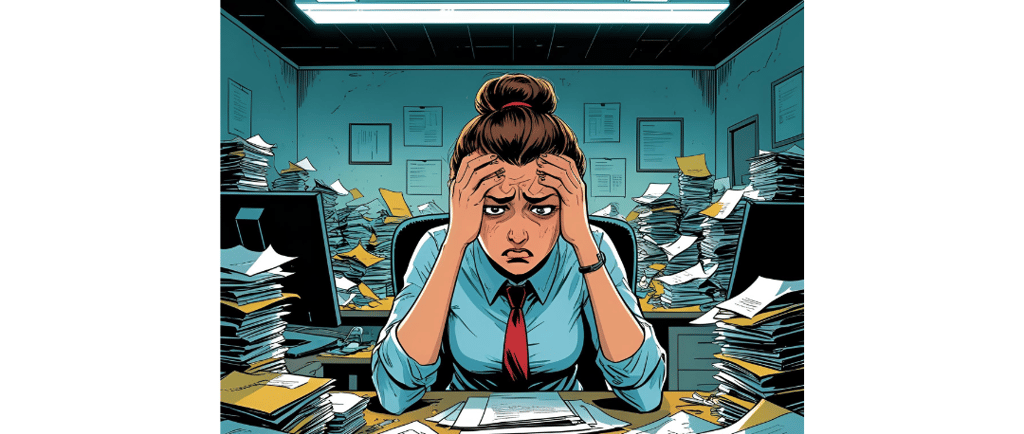Is Your Job Toxic? 8 Red Flags You're in a Bad Workplace (Not a Rough Patch)
Is your stress from a temporary rough patch or a toxic work environment? Learn the 8 critical red flags of a bad workplace culture, from constant anxiety and moving goalposts to a gossip-heavy atmosphere. This guide helps you diagnose your job, understand the impact on your health, and decide whether to fix the situation or plan your exit. Protect your mental health and career.
SOCIAL


You wake up on Sunday morning with a pit in your stomach. It’s not the weekend fun you’re dreading ending; it’s the thought of Monday morning. You feel a low hum of anxiety that lasts all day. You find yourself rewriting a simple email five times, terrified of a misinterpretation. You work late, hit your targets, and instead of praise, you get a question about why you didn’t do more.
Is this just a challenging period at a fundamentally good job? Or are you in a genuinely toxic work environment?
It’s a crucial distinction. Every job has its stressful sprints, difficult clients, and tough quarters. These are temporary rough patches. A toxic workplace, however, is defined by a pervasive, ingrained culture that systematically erodes your well-being, confidence, and professional growth.
The cost of ignoring the signs is high: chronic stress, burnout, anxiety, and even physical health issues. Learning to identify the red flags is the first step in protecting your mental health and career.
This guide will walk you through the 8 major red flags that signal a bad workplace, helping you diagnose your situation and empowering you to make an informed decision about your future.
Red Flag #1: You're Constantly Walking on Eggshells
What it looks like: You spend an excessive amount of mental energy monitoring your every move. You agonize over the phrasing of Slack messages, rewrite emails to sound "less threatening," and rehearse simple conversations in your head. The atmosphere feels tense and unpredictable, as if any minor misstep could trigger a negative reaction from a manager or colleague. This isn't about being professional; it's about operating from a place of chronic fear and hypervigilance.
Why it's toxic: This environment is rooted in psychological insecurity. When employees are afraid to communicate openly, innovation dies. People stop sharing ideas, asking questions, or giving feedback for fear of reprisal. This culture of fear is often engineered by a leader who rules through intimidation or unpredictability, keeping employees off-balance and easier to control.
Rough Patch vs. Red Flag: A rough patch might involve being cautious during a specific high-stakes project or while giving difficult feedback to a senior leader. A red flag is when this feeling is the default state, every single day, with no specific trigger other than the general environment.
Red Flag #2: The Goalposts Are Always Moving
What it looks like: You receive a clear objective, you pour your energy into meeting it, and you succeed. Yet, upon completion, the criteria for success have mysteriously changed. What was praised on Monday is criticized on Tuesday. You’re told to "be more innovative," but when you are, you’re chided for not following procedure. This creates a maddening "Kafka trap" where you can never win, no matter what you do.
Why it's toxic: Moving goalposts is a classic sign of poor, often manipulative, management. It can be a tactic to avoid giving promotions or raises ("they just didn't quite hit the new targets"), or a way for an insecure manager to maintain a position of power by never allowing a subordinate to feel fully competent. It destroys morale and motivation because it makes genuine achievement impossible.
Red Flag #3: Office Politics Trump Hard Work
What it looks like: Promotions, rewards, and interesting projects aren't based on merit or results. Instead, they're doled out based on who is in the "in-crowd," who has lunch with the boss, or who is best at taking credit for others' work. You see consistent underperformers get passes because they are well-liked, while quiet, diligent high-performers are overlooked. Performance reviews feel like a popularity contest.
Why it's toxic: This decimates any sense of fairness and justice within the company. When hard work isn’t recognized or rewarded, employees become disengaged and cynical. They learn that sucking up is more valuable than skill, leading to a brain drain as talented people leave and only those who excel at politics remain.
Red Flag #4: 24/7 Availability is the Unwritten Rule
What it looks like: Slack messages at 10 PM. "Quick calls" on Saturday morning. Emails sent over the weekend with an expectation of an immediate response. While the official policy might say "we respect work-life balance," the unofficial culture punishes those who enforce boundaries. You feel a constant, low-level pressure to be "on" and connected, blurring the lines between your personal and professional life until they disappear entirely.
Why it's toxic: This culture leads directly to burnout. Humans are not designed for perpetual work. The inability to disconnect and recharge leads to decreased productivity, increased errors, resentment, and severe mental and physical health consequences. It’s a sign of poor planning and disrespect for employees' personal time.
Red Flag #5: Gossip and Complaining are the Primary Culture
What it looks like: The main way colleagues bond is through shared complaining—about leadership, other teams, or workload. Instead of collaborative problem-solving, conversations are dominated by venting and gossip. This creates a negative, us-vs-them mentality that focuses on problems rather than solutions. You feel drained after team lunches instead of energized.
Why it's toxic: While occasional venting is normal, a culture built on it is poisonous. It fosters mistrust and cynicism, preventing positive change because energy is spent complaining rather than constructing. It’s also a sign that employees feel psychologically unsafe to address issues through formal channels, so they resort to the break room instead.
Red Flag #6: You're Never Quite Good Enough
What it looks like: Even your wins are met with a "yes, but..." response. You land a major client, and the focus immediately shifts to why the paperwork isn't done yet. You exceed your quarterly target by 15%, and the response is, "Imagine if you'd hit 20%." This constant minimisation of your achievements creates a feeling that you are perpetually falling short, no matter how hard you try.
Why it's toxic: This is often a deliberate management tactic used to keep employees striving and insecure, making them less likely to ask for raises or promotions. Over time, it completely shatters your self-confidence. You internalize the criticism and start to believe you are incompetent, which can have devastating effects on your career and personal life.
Red Flag #7: HR is There for Damage Control, Not for You
What it looks like: You muster the courage to bring a legitimate concern to HR—perhaps about a manager's behavior, unfair treatment, or burnout. Instead of investigating and advocating for a solution, they dismiss your concerns. You get responses like, "That's just how they are," "We're in a busy period, it'll get better," or "Have you tried adapting to their style?" Their primary role appears to be protecting the company from liability, not protecting you from a harmful environment.
Why it's toxic: This is perhaps the most definitive sign of a hopelessly toxic culture. When the very department designed to ensure fair and safe treatment is complicit in the problem, there is no internal recourse. It signals that the dysfunction is not a bug; it's a feature, endorsed from the very top.
Red Flag #8: Your Body is Telling You to Run
What it looks like: This is the most important red flag. Your physical and mental health are declining. You experience:
The Sunday Scaries: A deep sense of dread and anxiety every Sunday.
Chronic Exhaustion: Feeling tired no matter how much you sleep.
Physical Symptoms: Frequent headaches, stomach issues, a weakened immune system, or muscle tension.
Loss of Joy: Hobbies you once loved feel like a chore. You’re irritable with friends and family.
Cynicism and Detachment: You’ve become deeply negative and feel disconnected from your work.
Why it's toxic: Your body's stress response system is not designed to be activated constantly. Chronic exposure to a toxic environment puts you in a permanent state of "fight or flight," leading to the serious health consequences listed above. Your body is giving you the most honest feedback you will ever get. Listen to it.
Conclusion: So, What Now? From Diagnosis to Action
If you nodded along to more than a couple of these points, you’re likely in a toxic environment, not a rough patch. A rough patch has a clear cause and an end in sight. A toxic culture is the very fabric of the organization.
Knowing this is power. Now, you have a choice. You are not a passive victim; you can take agency. Your options generally fall into three categories:
Protect Yourself Internally: While you plan your next move, disengage. Set fierce boundaries around your time. Do not check email after hours. Document everything. emotionally to stop seeking validation from a source that will never give it. Invest your energy in your life outside of work.
Attempt to Address It: If you feel safe, you can try to have a direct, professional conversation with your manager or HR. Frame issues around impact on productivity and retention. However, be prepared for this to not work if the culture is deeply entrenched.
Plan Your Exit: This is often the healthiest and most effective long-term solution. Start discreetly updating your resume and networking. Every minute you spend job searching is an investment in your future well-being.
